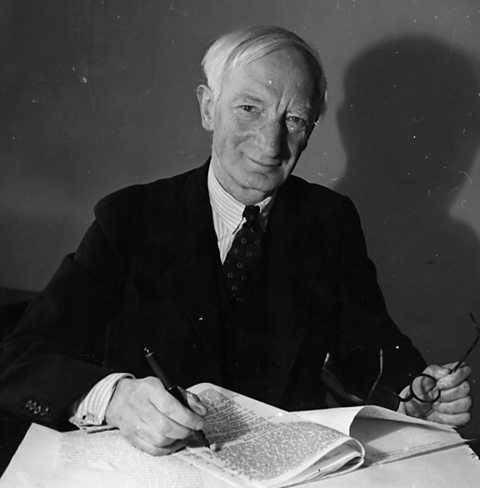What is the Welfare State?
There are many ways in which the government supports those in need.

Based on proposals by Lord Beveridge, the UK's Welfare State was founded after World War Two, with the aim to provide a comprehensive system of social insurance from 'cradle to grave'.
This meant that everyone in the country would be taken care of from the time of their birth, until their death. The protection provided was funded through National Insurance contributions made by all working people.
Its founding principles of universal provision and flat-rate contributions, were held up as a model for social justice.

What are the main parts of the UK's Welfare State?
Funding for the Welfare State has changed since it was set up. As well as National Insurance contributions, some funding comes from general taxation (including Income Tax paid by individuals, Corporation Tax paid by businesses, and VAT added to most products and services people buy).
Today there are five main parts to the UK's Welfare State:
- social protection including social security benefits
- the National Health Service (NHS)
- comprehensive education
- social housing
- personal social services and services for children
Social protection including security benefits
Social protection covers many areas of spending including out-of-work benefits, pensions, and supporting people who are at risk of exclusion from society, such as those on low incomes or refugees.
In 2023/24, the UK Government is expected to spend approximately ÂŁ341 billion on social protection. (Source: GOV.uk)
For Scotland, the social protection figure was just under ÂŁ30 billion in 2022-23. (Source: Scottish Government)
National Health Service (NHS)
The National Health Service was established to provide comprehensive, universal, high quality healthcare that was free at the point of use and allowed patient choice. The NHS has largely kept to its original aims.
Costing ÂŁ245 billion in 2023/24, studies show that healthcare on the NHS, once rated one of the best healthcare systems in the world, today comes out less favourable for a range of health outcomes. For example, there are widespread problems within the NHS with regards to staff shortages, waiting times and access to some types of drugs.
As a devolved power, healthcare decisions for Scotland are made in the Scottish Parliament. This has resulted in increasingly different approaches to health between Scotland and the rest of the UK.
For example, the Scottish Government abolished prescription charges for everyone, while in England many people must pay for prescriptions.
Scottish healthcare spending in 2022-23 was around ÂŁ17.6 billion. (Source: Scottish Government)
Overall, per person, the NHS in Scotland spent ÂŁ3,781 compared to ÂŁ3565 in 2021/22 (Source: British Medical Association)
Education services
State education services run from nursery, through primary and secondary school, and into further and higher education. In the main, educational standards are reasonably good. However, there are many criticisms including poor quality school buildings, poor attainment amongst some groups and shortages of staff and equipment. In 2023-24, ÂŁ131 billion was spent on education across the UK.
Education is a devolved power, so there are significant differences in education policy north and south of the border. There are no tuition fees for university students from Scotland studying in Scotland, but there are elsewhere in the UK. Other differences include university degree courses lasting four years in Scotland and three in England. The curriculum in Scotland is more broad-based and holistic, but in England there is a more specialised approach. Education in Northern Ireland and Wales is different again.
In 2022-23, spending per pupil in Scotland, was over ÂŁ8,500 compared to ÂŁ7,200 in England which is over 18% higher. (Source: The Institute for Fiscal Studies)
Social housing
Social housing is accommodation that is rented from local authorities or housing associations, which aims to provide for people who canât afford to rent or buy a home. Most often, social housing is built with government funding support. According to the homeless charity Shelter, 24% of all homes in Scotland are social housing.
Housing is another devolved power and there has been several important laws passed by the Scottish Parliament to try and tackle homelessness and poor quality housing.
In 2020, the Scottish Government published itâs ÂŁ100 million âEnding homelessness together; updated action planâ which aims to provide everyone with a home that meets their needs. By 2032, the Scottish Government aims to build an additional 110,000 affordable homes.
Despite legislation and additional funding, homelessness and poor quality housing remain problems in Scotland. Shelter stated that there were 15,039 households in temporary accommodation, waiting for a home in March 2023.
Personal social services and services for children
Services in this area include care services to the elderly in their own homes. Services for children include fostering and adoption services.
In Scotland, in 2021, 13,255 children were in the care of their local authority. This was fewer than in previous years. (Source: Scottish Government)
According to UK Government statistics, costs for Personal Social Services amounted to ÂŁ43 billion in 2023-24 across the UK.